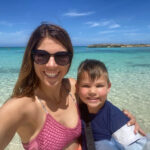The Whittaker family of West Virginia gained notoriety after photographer and filmmaker Mark Laita brought their unique story to light. Their isolated lifestyle and distinct family dynamics, dubbed “America’s most inbred family,” sparked widespread curiosity and discussion. At the heart of their story lies a complex family tree, revealing a history of consanguinity that has profoundly shaped their lives and health.
Laita’s initial encounter with the Whittakers in 2004, followed by more in-depth documentation starting in 2020, aimed to understand their lifestyle and family history. Through his work, the intricate Whittaker Family Tree was revealed, illustrating the ancestral decisions that led to genetic issues and various challenges faced by the family members. Some members of the family have significant communication difficulties, relying on grunts, while others experience learning disabilities and a range of physical and mental health conditions.
The origins of the Whittaker family’s inbreeding trace back several generations. The family’s story centers around siblings Loraine, Timmy, and Ray, and their cousin Freddie (now deceased). Crucially, it has been reported that their parents were double first cousins. Earlier assumptions that their parents were siblings have been disproven by more recent investigations into the family’s history. While a sister of these siblings remains unnamed and uncontacted by Laita, many Whittaker family members have children outside of this inbred lineage, living separate lives away from the family homestead in Odd, West Virginia. This land, once owned by the family patriarch, remains the central location for many Whittakers.
The reasons behind the inbreeding within the Whittaker family remain unclear. However, Mark Laita’s docuseries on YouTube and his 2008 book, “Created Equal,” shed light on its profound consequences. He documented the limited educational opportunities for some family members, their struggles for survival on their farm, and the protective nature of their neighbors. Laita recounted his initial, jarring encounter with the family: “There’s these people walking around, and their eyes are going in different directions, and they are barking at us.” He described the scene as “out of control — the craziest thing I have ever seen.” His arrival in Odd, a small, isolated town in Raleigh County, was initially met with hostility, requiring a police escort on subsequent visits due to increased public attention following his documentaries.
The Whittaker family tree’s inbreeding began with identical twin brothers, Henry and John Whittaker. Their descendants intermarried, solidifying the consanguineous lineage. Henry and John’s children, including Harry and Sally, had seven offspring. Among them was John Isom Whittaker, born in 1882, who married his first cousin, Ada Rigg. John Isom and Ada had nine children, including Gracie Irene Whittaker, born in 1920. Gracie Irene Whittaker then married her double cousin, John Emory Whittaker, in 1935. This union resulted in 15 children, many of whom have faced significant physical and mental disabilities directly linked to the extensive inbreeding within their family tree.
Adding to the family’s complex narrative, a recent scandal involving Larry Whittaker’s daughter, BJ, has further amplified their notoriety. BJ admitted to fabricating her father’s death to solicit funds for a nonexistent funeral. In a video by Mark Laita, BJ confessed to the scam, citing her struggle with drug addiction. This incident provoked public outrage, highlighting the difficult circumstances and vulnerabilities within the Whittaker family and their community.
The Whittaker family resides in McDowell County, a region once prosperous due to coal mining but now experiencing severe economic decline. The area has witnessed a dramatic population decrease and struggles with high rates of drug addiction, painting a stark picture of socio-economic hardship. The Whittaker family’s story, rooted in a history of inbreeding as evidenced by their intricate family tree, sadly reflects the broader challenges faced by isolated and economically distressed communities in America.

